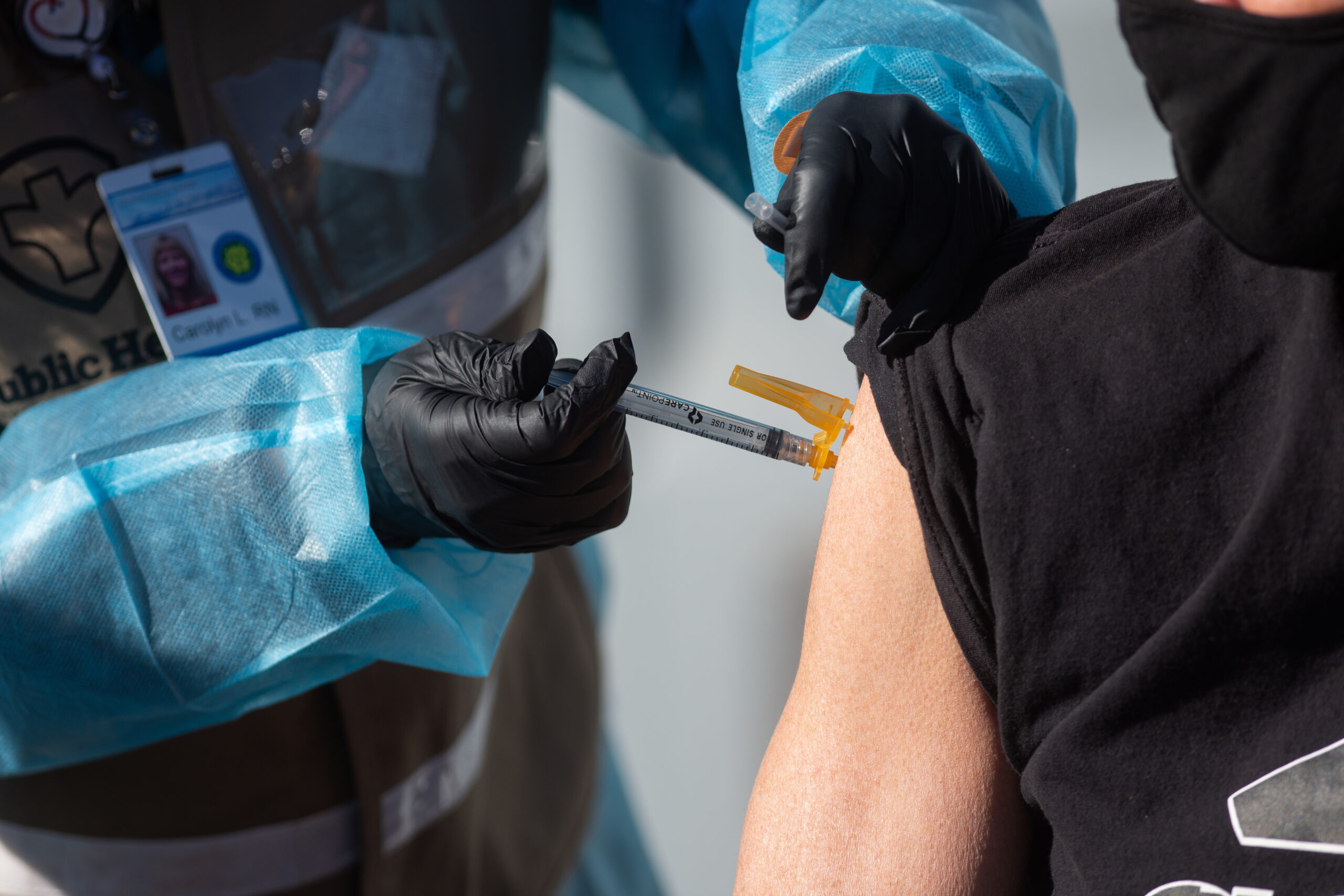Nevada to open up vaccines to seniors 65 and above at retail pharmacies starting next week

Nevadans between the ages of 65 and 69 will be eligible to receive the vaccine next week at retail pharmacies across the state, officials announced Wednesday.
While individuals in that age group have long been eligible to receive the vaccine in other states, as well as in some individual jurisdictions in Nevada, including Elko County, this is the first time that all seniors statewide will be eligible to receive the vaccine. State officials made the decision earlier this year to prioritize vaccinating the 70 and older population before turning to those between the ages of 65 and 69, much to the frustration of many seniors in that age group in Nevada.
The governor also announced that full-contact sports governed by the Nevada Interscholastic Activities Association can resume, and he’s allowing some schools and buses to increase their capacity limits as well.
Shots for those 65 to 69 will only be available initially at retail pharmacies that are currently offering the COVID-19 vaccine — including both those that receive their own allocation of doses through a special federal program and those that receive doses as part of the state’s allocation. Smith’s, Walgreens and Walmart are offering the vaccine to residents in several counties, including Clark and Washoe, while Raley’s and Safeway are vaccinating at select locations in rural Nevada, including Tonopah, Yerington and Hawthorne.
Gov. Steve Sisolak, at a press conference on Monday announcing the expansion of vaccine eligibility, noted that not everyone who wants the vaccine will immediately be able to get the vaccine with a still limited number of COVID-19 vaccines being sent to the state by the federal government.
“We know it will not be enough to cover the range of Nevadans in this age group,” Sisolak said. “We continue to ask Nevadans to be patient as we await increased allocations from the federal government.”
Sisolak said the state’s goal is to work with counties to enable them to open up vaccine appointments at other distribution sites — including community vaccination events — to the 65 to 69 age group by March 1. More than 16 percent of the state’s population is over the age of 65, according to the U.S. Census Bureau.
The announcement comes amid news that the state is working on a new statewide vaccine appointment system through Salesforce that aims to streamline a registration process, which, to this point, has been spread out across multiple platforms and varies widely by jurisdiction. The Salesforce system will be voluntary for local jurisdictions to opt into.
Sisolak, at the Wednesday press conference, also announced that football and other full-contact high school sports will be finally allowed to resume across the Silver State. But the Nevada Interscholastic Activities Association is expected to impose strict regulations on how athletic programs can safely resume and will establish COVID-19 testing programs for coaches, students and staff.
Some high school athletes have been sidelined from certain sports since last spring, disheartening many students who view those activities as their outlet and, in some cases, their ticket to higher education if they could parlay it into a scholarship. Football, rugby, wrestling, basketball, group cheer and dance, and lacrosse are among the full-contact sports that have been prohibited under a directive issued by Sisolak in the fall.
The governor’s latest directive only pertains to NIAA-governed teams, though, meaning club and travel leagues are not yet cleared to resume playing full-contact sports. Sisolak said the decision to allow NIAA to resume full-contact sports was made because they’re “highly regulated” and overseen by school districts.
The governor indicated local entities may be charged with deciding when non-NIAA full-contact sports can resume. The state hopes to transfer some decision-making authority to local jurisdictions by May 1.
Schools that have already had some in-person instruction, meanwhile, will be allowed to increase capacity in classes to accommodate more students, as will school busses. Schools that choose to bring back more students, however, will be subject to strict measures.
State Superintendent Jhone Ebert said schools can increase their capacity limits to 75 percent, or 250 people in a contained space, if students and staff continue wearing masks and social distancing. Similarly, school buses can begin transporting more students by operating at 66 percent capacity.
Those new rules won’t apply to the Clark County School District, which isn’t starting its return from distance learning until March 1.
In June, Sisolak issued a directive that allowed school buildings to reopen if districts followed state guidance and submitted their plans to the Nevada Department of Education for approval. While some rural school districts were able to return to brick-and-mortar classrooms full time, other school districts began the year under a hybrid model, which rotates groups of students in person, to accommodate the social distancing requirements.

